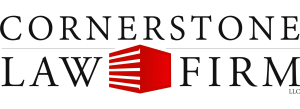
Quiet Title Action in Pennsylvania
What’s a quiet title? And is there any such thing as loud real estate?
All right, all jokes aside, a “quiet title” action is an important right in Pennsylvania to demonstrate that you own a piece of real property. Quiet title actions establish who is the rightful owner of a certain lot of real estate. Quiet title actions are sometimes brought between amicable parties trying to nail down once and for all where boundary lines or easements are, or they can be hotly contested fights to prove that someone has no claim on a property at all.
Cloudy title
Title to real estate can become “cloudy” under a number of circumstances. One examples is where the same person has sold the same piece of real estate to multiple parties. (Yes, seriously! This happens.) Cloudy title also arises where an estate was never opened and ownership never passed to an heir through lawful means. Even decades down the line this can cause all sorts of problems for a potential buyer of the real estate.
Quiet title actions are also brought when someone buys a property at sheriff’s sale or tax sale and wants to ensure the old owner can’t come back and try to redeem the property or otherwise claim that the sale was not done legally. Quiet title actions can also be very similar to declaratory judgment actions, in that they are sometimes done to extinguish someone’s claim and end all dispute over a property.
Where should you file a quiet title?
Quiet title actions are appropriately brought in the county in which the property issue is located. This can create some confusion when a piece of property spans several counties or when even a small piece of the parcel goes into another county. Quiet title actions are brought on behalf of the plaintiff or plaintiffs who claim full ownership of the property and name all defendants who could have any ownership claim in the property. This means naming as defendants anyone who claims any rights in the property, but also includes naming any prior owners and their descendants or heirs who might have also had claim to the property.
Finally quiet title actions are typically brought “against the world,” which means they purportedly name all potential defendants any where in the world.
How do you prove who owns land?
It’s not like Monopoly. We can’t just see who has the latest Deed at their house. Instead, evidence gathered from the Recorder of Deeds in a County is a starting point, but should also be supplemented by information that might inform adverse possession.
A quiet title action will typically take into account evidence such as old contracts of sale and deeds that are part of the chain of title and even letters between neighbors which demonstrate belief about the correct spot where a specific boundary line should be drawn.
In addition, other community evidence may be available from historical societies or old surveyor offices that have been purchased by other surveyors. Documents from old law firms or that were in storage in family members’ homes can also be important, along with auction receipts, letters between neighbors and even journal entries.
Call Cornerstone Law Firm to discuss your need for a quiet title
The final conclusion of a quiet title action is the right to record a new deed that has been approved by the court. If you have any questions or property disputes, call Cornerstone Law Firm and ask to speak to one of our Real Estate attorneys.
